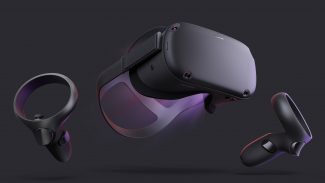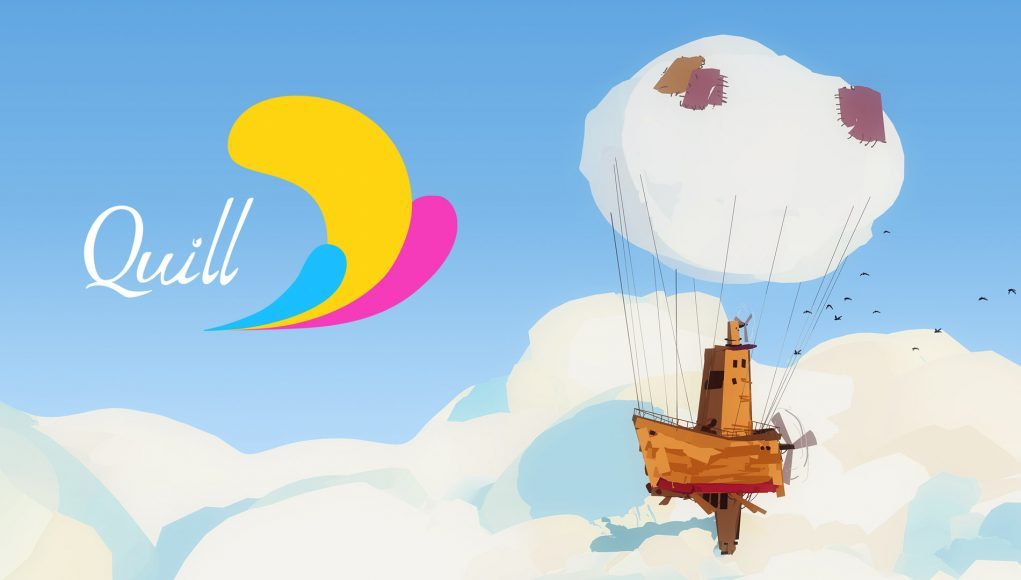Quill is Facebook’s first-party VR art tool. While users can view Quill artwork in the program itself and inside of Facebook Spaces, the company is hoping to unlock the artwork by making it viewable on Oculus Quest too.
Oculus launched Quill initially back in December of 2016, alongside the launch of the Touch controllers; Facebook eventually took over development and has been iterating on the application ever since. We’ve seen artists make some really impressive artwork with the program, including both illustrations and animations.
Now Facebook is working to make the artwork more widely available by getting it to display in real-time on the upcoming Oculus Quest, the company’s high-end standalone headset due out in Spring 2019.

Speaking today at the XRDC conference in San Francisco, Facebook Android VR Engineer Pierre-Antoine LaFayette explored the technical challenges with getting complex Quill art onto the constrained Quest hardware.
LaFayette explained that one of the most important elements to bringing Quill artwork to Quest is optimizing the file sizes so that users don’t have to download massive files only to take a brief look at a piece of artwork. Thankfully, the team had developed the ‘IMMersive Quill Transmission format’, which we understand to have been made initially for sharing Quill artwork on Rift. By throwing out extra information not necessary to rendering and playback of the artwork, the IMM format reduces the size of Quill scenes by as much as 10 times. LaFayette gave examples of two pieces of art: ‘Ninja’, which was 27MB as originally created, comes down to 2.7MB in the IMM format, and ‘Beyond the Fence’ (a 3 minute animation) would be 503MB originally but compresses down to 81MB for sharing.
Of course, once the data actually arrives, finding out how to render the scenes is the next big challenge. LaFayette said that Facebook wrote a custom renderer for Quill artwork running atop Android, which allows them to most easily support existing and future playback functions of the artwork.

While most VR scenery is created with performance in mind, because Quill allows artists to make free-form geometry with arbitrary sizes, shapes, and colors, scenes can actually wind up becoming complex very fast, not to mention that users can choose to explore the scenes from any angle. Finding ways to optimize the scenes while maintaining the artist’s original vision is then the key challenge.
LaFayette explained how the team attacked the rendering and optimization of Quill artwork on Quest in a number of ways, mostly dealing with limitations on draw calls and vertices. For the benefit of other developers doing optimization work on mobile, he recommended tools that were helpful in the process, like OVRMetric, Snapdragon Profiler, RenderDoc, and Android systrace.
In the end, LaFayette says the team has achieved smooth rendering on Quest of a Quill scene consisting of some 2 million polygons, while aiming to maintain the essence of the artwork.
LaFayette tells Road to VR that Facebook hasn’t decided exactly when Quill artwork will come to Quest, but the optimization work that he overviewed today is a step toward making it available on the headset and possibly on in other places (like non-VR mobile devices) in the future. It’s also still up in the air if the company will release a special Quill viewer app, or do something else like build the viewing functionality into another app like Rooms.
While Quill artwork will eventually come to Quest, the tool itself (for authoring the artwork) may not wind up on Quill because Facebook is committed to continuing to build it as a professional tool, LaFayette says.







